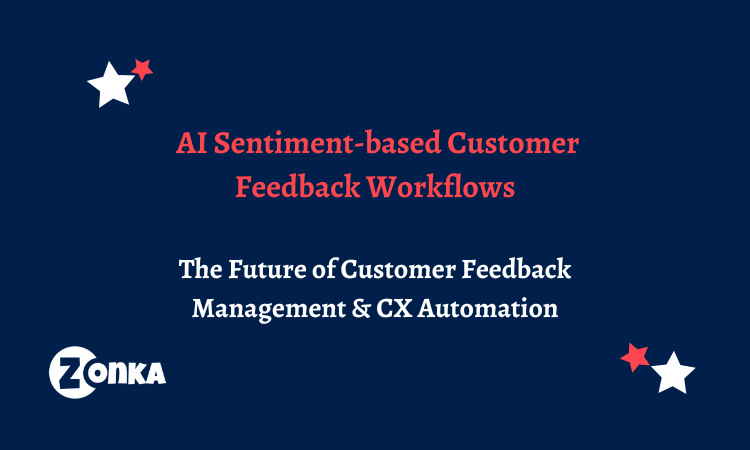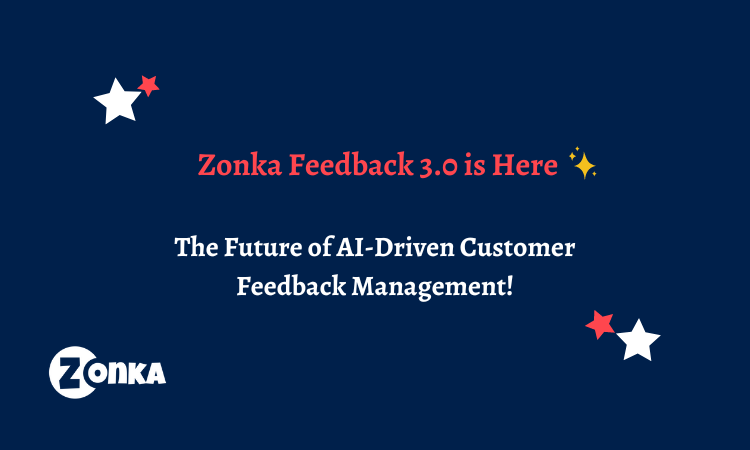In the world of sci-fi movies, AI often takes center stage as the ultimate futuristic tool—think of Iron Man’s JARVIS anticipating every need or Her’s Samantha crafting conversations so personal, they blur the line between human and machine.
But here’s the kicker: AI isn’t just a Hollywood fantasy anymore. It’s real, and it’s already transforming how businesses interact with their customers!
Imagine checking into a hotel where the concierge isn’t a person, but an AI named “Connie.” Hilton Hotels made this a reality, offering guests personalized recommendations, instant answers, and local tips—all powered by an AI that learns from every interaction. This isn’t just a glimpse into the future; it’s happening right now, reshaping what customer experience means.
But AI’s influence goes way beyond cool hotel tech. From real-time sentiment analysis that reads customer emotions like a book to AI-driven chatbots that provide round-the-clock support, AI is revolutionizing customer experience (CX) across the board. These innovations aren’t just making customers happier—they’re driving business growth in ways we’ve never seen before.
As we dive into the top AI trends in customer experience, get ready to see how these technologies are not just enhancing customer satisfaction but also paving the way for the future of business. Ready to discover how AI can supercharge your CX strategy? Let’s explore the trends that are setting the stage for the next era of customer experience.
TL;DR
- AI Customer Experience (CX) uses artificial intelligence to enhance customer interactions, offering personalized, efficient, and automated support.
- Some of the AI trends in customer experience include hyper-personalized interactions, AI-powered chatbots, sentiment analysis, predictive analytics, and voice & speech recognition.
- Companies like Salesforce, Amazon and Marriott International are leveraging AI for personalized customer journeys, efficient service, and predictive analytics.
- The future of AI in CX space includes customer digital twins, emotion AI, and quantum computing, leading to more personalized, empathetic, and immersive customer experiences.
- Zonka Feedback is an AI powered survey tool that automates feedback collection, provides advanced sentiment analysis, and enhances CX through adaptive surveys and workflow automation. Sign up for a 14-day free trial or schedule a demo to explore its AI features now.
Get Better Understanding of Customer Feedback with AI Insights
Create, share and analyze surveys in seconds using Zonka Feedback's AI and deliver exceptional customer experience.

What is an AI Customer Experience?
Imagine walking into a high-end store, but instead of a human greeter, you’re welcomed by a virtual assistant who knows your name, understands your preferences, and can predict what you’re looking for based on your past interactions. This isn’t a scene from a futuristic movie; it’s the new reality of customer experience powered by AI.
AI Customer Experience (CX) is the use of artificial intelligence to enhance every interaction a customer has with a brand. From personalized recommendations to automated support, AI is transforming how businesses connect with their customers.
AI will bring humans and machines closer together...It’s not about machines replacing humans, but machines augmenting humans.
As rightly put forth by Robin Bordoli, Partner, Authentic Ventures, AI is reshaping the customer experience landscape by blending human intuition with machine efficiency. As AI continues to evolve, it's enabling companies to deliver faster, more personalized, and more effective customer service at scale.

Latest Reports on AI in Customer Experience
The landscape of AI in customer experience is constantly evolving, with new research shedding light on emerging trends and technologies. Let us look at some latest studies conducted about AI and CX.
- McKinsey & Company’s Report: A recent study by McKinsey reveals that companies integrating AI into their customer experience strategies see a 20% increase in customer satisfaction and a 10% reduction in costs. The research highlights that AI’s ability to personalize interactions and provide real-time insights is a key driver of these improvements.
- Salesforce’s "State of the Connected Customer": This report finds that 79% of customers expect personalized experiences from their brands. AI is meeting this demand by enabling companies to tailor every interaction to individual preferences, driving higher engagement and loyalty.
- Gartner’s "Top Strategic Predictions for 2024 and Beyond": Gartner's latest report emphasizes the growing reliance on AI to enhance customer experience. It predicts that by 2024, AI-driven processes will handle over 75% of customer interactions across industries. The report highlights the increasing usage of AI not only in customer service but also in marketing, sales, and product recommendations.
Top 13 AI Trends in Customer Experience for Enhanced Engagement
Let us directly jump into the top trends that are making headlines in the CX space for enhanced customer satisfaction and engagement.
1. Personalized Customer Interactions
In today's hyper-connected world, customers crave personalized experiences that make them feel valued and understood. AI is revolutionizing how businesses interact with their customers, offering tailored interactions that go far beyond simple segmentation.
Let's dive into how AI is transforming personalized customer experiences:
- Hyper-Personalization: AI’s ability to analyze vast amounts of customer data enables businesses to offer hyper-personalized experiences that go far beyond simple segmentation. Take Coca-Cola, for example. They use AI to craft marketing campaigns that feel like they’re speaking directly to each individual customer. By analyzing social media trends and purchase data, Coca-Cola creates ads that resonate on a personal level, making every customer feel like the brand truly understands them.
- Dynamic Content: Say goodbye to generic website experiences. AI enables dynamic content that adapts in real-time to meet the needs of each customer. eBay, for instance, leverages AI to personalize the homepage for every user, showcasing items and deals most relevant to their interests.
- Personalized Loyalty Programs: Loyalty programs are no longer one-size-fits-all, thanks to AI. AI-powered loyalty programs offer personalized offers and rewards based on your purchase history, creating a deeper emotional connection with the brand.
- Predictive Personalization: What if a brand could predict your next move before you even knew it yourself? AI makes this a reality. Stitch Fix, a clothing subscription service, uses AI to anticipate your fashion preferences and send you outfits that match your style profile and past choices. It’s like having a personal stylist who knows exactly what you’ll love, reducing the hassle of returns and boosting your excitement every time a new box arrives.
- Behavioral Triggers: Sometimes, it’s the little things that make the biggest difference. AI can pick up on subtle changes in your behavior and respond with a personalized touch. For example, a financial services company might notice you’ve started saving more aggressively and then suggest tailored investment products or financial advice at just the right moment. These behavioral triggers create a sense of being looked after, building trust and showing that the brand is in tune with your needs.
2. AI-Powered Chatbots & Virtual Assistants
AI-powered chatbots and virtual assistants are quickly becoming the unsung heroes of customer experience. They’re always on, always ready, and always learning. Here's how these AI-driven marvels are reshaping customer interactions:
- 24/7 Support: Imagine having a team of customer service agents who never sleep, never take breaks, and are always ready to help. That’s what AI-powered chatbots bring to the table. They provide round-the-clock support, ensuring customers can get assistance whenever they need it. For instance, Bank of America’s chatbot, Erica, is always available to assist with tasks like checking balances or making transfers, enhancing convenience and satisfaction.
- Conversational AI: Today’s chatbots are far more than just automated responders. Thanks to conversational AI, they can understand context, detect nuances in language, and even pick up on customer emotions. Take the case of Sephora’s chatbot, which not only helps with product recommendations but also engages in friendly, natural conversations, making the interaction feel less like talking to a machine and more like chatting with a helpful friend.
- Efficient Query Resolution: One of the biggest advantages of AI chatbots is their ability to handle multiple queries simultaneously, without any drop in efficiency. They can handle multiple inquiries simultaneously, directing complex issues to human agents when necessary. This speeds up resolution times and ensures customers receive the right help quickly, reducing frustration.

3. Sentiment Analysis
Imagine having the ability to read between the lines of what your customers are saying, capturing not just their words but the emotions behind them. This is the magic of AI-powered sentiment analysis. It’s like having a digital empath that helps you understand your customers on a deeper level, allowing you to respond in ways that truly resonate.
Here’s how sentiment analysis is transforming customer experience:
- Real-Time Emotion Detection: AI-powered sentiment analysis tools allow you to gauge the mood of your customers in real-time as they interact with your brand. For instance, a global retailer might use sentiment analysis to monitor social media chatter during a new product launch. If the sentiment shifts negatively, they can respond immediately with targeted messaging or adjustments, turning potential issues into opportunities.
- Actionable Insights from Customer Feedback: Sentiment analysis goes beyond just capturing emotions—it turns them into actionable insights. Consider a scenario where a hospitality company uses AI to analyze guest reviews. By identifying recurring themes of dissatisfaction, such as slow check-in times or room cleanliness, the company can prioritize improvements where they matter most. This not only enhances the guest experience but also drives higher satisfaction and repeat bookings.
- Personalized Marketing Campaigns: Great marketing isn’t just about selling a product; it’s about making people feel something. AI can analyze customer sentiment from past campaigns to help craft future ones that strike the right emotional chord. For instance, an e-commerce brand might find that customers expressed joy and excitement after a certain holiday promotion. Armed with this insight, they can design their next campaign to tap into those same feelings, ensuring that their marketing hits home and drives more sales.
- Brand Reputation Management: Sentiment analysis can also help you stay ahead by continuously monitoring how your brand is perceived online. For instance, if you run a global fashion brand, you might use AI to track sentiment across social media, news outlets, and customer reviews. If sentiment starts to dip, you can can take immediate corrective actions, whether it’s through a public statement, a product recall, or enhanced customer engagement efforts.
💡Zonka Feedback’s AI-driven Sentiment Analysis does more than just gauge overall sentiment—it also detects emotions, intent, and urgency within customer feedback. This allows your team to dive deep into customer insights with less effort, enabling faster and more personalized responses.
4. Predictive Analytics
Imagine knowing what your customers want before they do. Predictive analytics, powered by AI, makes this possible by analyzing historical data to forecast future behaviors and trends. It’s like having a crystal ball, but backed by data science. It can further help you in:
- Improving Product Recommendations: Predictive analytics also powers smarter product recommendations. For instance, Netflix uses AI to analyze your viewing history and predict what you’re likely to watch next, keeping you engaged. The more you watch, the more the system learns, fine-tuning its predictions to keep you hooked. It’s like having a friend who always knows what you’re in the mood to watch.
- Optimizing Inventory Management: Predictive analytics doesn’t just enhance customer interactions—it also optimizes backend operations. A retail chain might use AI to predict which products will be in high demand during the holiday season, ensuring they stock up in advance. This reduces the risk of stockouts and overstock, balancing customer satisfaction with cost efficiency.
5. Augmented Reality (AR) & AI Integration
The fusion of Augmented Reality (AR) and Artificial Intelligence (AI) is transforming the way customers interact with products and services. What was once the stuff of science fiction is now an integral part of the customer experience, making interactions more immersive, personalized, and engaging. Here’s how AR and AI are setting new standards:
- Enhanced Shopping Experiences: Imagine using your phone to see how that new couch will look in your living room before you buy it. Companies like IKEA make this possible with AR, enhanced by AI that suggests matching decor and ensures the scale is just right. It’s a smarter, more confident way to shop, reducing returns and boosting satisfaction.
- Interactive Product Demonstrations: AR and AI are also changing the way customers learn about products. For instance, a tech company might use AR to create an interactive product manual, where customers can point their device at a product to see how it works in real-time. AI further enhances this experience by offering personalized tips or troubleshooting advice based on the customer’s interaction history.
- Virtual Try-Ons: The fashion and beauty industries are being revolutionized by virtual try-ons, powered by the combination of AR and AI. Consider Sephora’s Virtual Artist app, where customers can try on makeup products virtually using their smartphones. AI refines the AR experience, adjusting for your skin tone and lighting, so you can confidently pick the perfect shade. This leads to happier customers and fewer product returns.

Image Source: TechTheLead
6. Customer Journey Mapping with AI
Mapping the customer journey has always been like trying to solve a complex puzzle, with each piece representing a different interaction or touchpoint. But now, with AI in the mix, you can not only see the entire picture but also refine each piece to create a seamless, satisfying experience for their customers.
Here’s how AI is helping you in customer journey mapping:
- Holistic Journey Visualization: Imagine being able to watch your customers’ entire journey unfold like a story, from the moment they first encounter your brand to the final purchase—and beyond. AI connects every touchpoint—online, in-store, social media—into a single, cohesive map. This big-picture view helps you understand how each interaction influences the customer’s decisions, crafting a more engaging and connected experience.
- Personalizing the Journey: One size never fits all, especially when it comes to customer journeys. AI tailors each step to individual preferences, making the experience feel uniquely personal. Imagine a streaming service that uses AI to rearrange its interface based on what a user loves to watch, deepening engagement by making the service feel custom-made for them.
- Dynamic Journey Adjustments: Customer journeys aren’t static; they’re fluid and ever-changing. AI enables you to make real-time adjustments based on live data, ensuring the journey remains smooth even when the unexpected happens. Picture an e-commerce site during a flash sale—AI can optimize page loads on the fly to handle traffic spikes, ensuring that the customer experience remains seamless even under pressure.
.png?width=1000&height=500&name=Customer%20Journey%20Map%20(2).png)
7. AI in Feedback Collection
In a world where customer feedback is gold, simply gathering it isn’t enough. AI is taking feedback collection to the next level, turning raw data into powerful insights and actionable strategies. Here’s how AI is transforming feedback collection into a game-changer for customer experience:
- Smart Surveys for Higher Engagement: Imagine filling out a survey that seems to know exactly what to ask next, keeping you interested and invested in sharing your thoughts. AI-powered surveys adapt in real-time, tailoring questions based on previous responses. For example, an airline might adjust survey questions mid-flight, leading to higher completion rates and more valuable feedback.
- Automated Feedback Analysis: Collecting feedback is just the beginning—the real magic happens in the analysis. AI excels at sifting through mountains of data, spotting patterns, and uncovering key themes with lightning speed. A retail chain, for instance, can use AI to categorize customer reviews into areas like product quality and service, enabling quicker, more informed decisions.
- Personalized Feedback Requests: AI doesn’t just collect feedback—it personalizes the entire process. Picture this: right after a high-value customer completes a purchase, they receive a survey with questions tailored to their specific experience. This personalization not only boosts response rates but also yields richer, more meaningful insights.
- Real-Time Feedback Collection: AI enables you to capture feedback in real-time, precisely when it matters most. For example, you can trigger a feedback request immediately after a purchase is completed, catching the customer’s experience while it’s still fresh. This real-time collection ensures that feedback is timely, relevant, and ready to be acted upon.
💡Zonka Feedback’s AI Survey feature takes feedback collection to the next level by creating adaptive surveys that respond to each participant’s answers. With this dynamic approach, you can deliver highly personalized surveys that evolve in real-time and gets you most authentic feedback.
8. Workflow Automation
In the fast-paced world of customer experience, efficiency is key. Workflow automation, powered by AI streamlines operations, reduces manual tasks, and ensures that customer interactions are as seamless as possible. Here’s how AI-driven workflow automation is making waves in customer experience:
- Streamlining Routine Tasks: Think about the repetitive tasks that bog down your team—like data entry, scheduling, or sending follow-up emails. AI can automate these workflows, freeing up your staff to focus on more complex, value-added activities. This not only speeds up the process but also reduces human error, resulting in faster service and happier customers.
- Improving Communication Efficiency: Workflow automation also enhances communication across teams and with customers. Imagine a scenario where a customer’s inquiry triggers a series of automated actions—an email acknowledgment, a task assigned to a support agent, and a follow-up reminder if the issue isn’t resolved within a certain timeframe. This kind of automation ensures that nothing falls through the cracks and that customers feel attended to every step of the way.
- Enhancing Customer Onboarding: The onboarding process is critical in shaping a customer’s perception of your brand. AI-driven workflow automation can make onboarding smoother and more personalized. For instance, a SaaS company might automate the onboarding journey by sending tailored welcome emails, setting up account configurations based on the customer’s preferences, and scheduling follow-up calls—all without manual intervention.
.png?width=1549&height=1079&name=Workflows%20and%20Automation%20(1).png)
💡Zonka Feedback’s Workflow Automation enhances CX by automating feedback collection, categorization, and follow-ups. It ensures relevant teams are instantly notified, enabling quick, efficient responses. This speeds up the feedback loop and allows teams to focus on strategic improvements instead of manual tasks.
9. Voice & Speech Recognition
Voice and speech recognition technologies, powered by AI, are reshaping the way customers interact with brands. These tools are no longer just about understanding words; they’re about capturing intent, emotion, and context, making customer interactions more natural and intuitive. Here’s how it helps to enhance CX:
- Voice-Activated Services: Imagine managing your entire customer experience with just your voice. AI-driven voice assistants like Alexa and Google Assistant allow customers to place orders, track shipments, or set up devices with simple voice commands. For example, customers can reorder products by just asking Alexa, making interactions seamless and hands-free.
- Enhancing Accessibility: Voice recognition technology is making digital services more accessible, particularly for customers with disabilities. A bank might offer voice-activated services, allowing visually impaired customers to check balances or pay bills using simple commands. This improves inclusivity and broadens access to essential services.
- Multilingual Capabilities: AI-powered voice recognition can handle multiple languages, making global customer service more efficient. For example, a customer service hotline could automatically detect and respond in the caller’s native language, ensuring clear and effective communication across linguistic barriers.
- Real-Time Transcriptions and Analytics: AI can transcribe and analyze customer service calls in real-time, providing immediate insights. For instance, a telecom company might use AI to identify common issues from call transcripts, allowing them to quickly address emerging problems and improve their services.
10. Automation in Customer Support
Automation in customer support, driven by AI, is revolutionizing how businesses manage customer interactions. By streamlining processes, reducing response times, and personalizing the customer journey, AI-powered automation is setting a new standard for efficiency and satisfaction.
Here’s how this technology can be helpful for your customer support:
- Automated Ticketing Systems: AI-powered ticketing systems work around the clock to categorize, prioritize, and direct customer inquiries to the right department. For example, a global software company might use AI to route complex issues to specialists while automatically resolving simpler queries. This intelligent management speeds up response times, ensures urgent problems are handled first, and enhances overall efficiency.
- Self-Service Solutions: Customers today value convenience, and AI-driven self-service solutions deliver just that. Companies like AT&T offer AI-powered portals where customers can troubleshoot issues, manage accounts, and make payments without speaking to an agent. These 24/7 self-service options empower customers to find answers on their own terms, reducing strain on support teams and improving customer satisfaction.
- Intelligent Escalation Systems: AI can identify when an issue requires human intervention and seamlessly escalate it to the right agent. For example, if a virtual assistant detects growing customer frustration, it can transfer the conversation to a live agent, ensuring a smooth transition and a positive customer experience.
11. AI-Driven Content Creation & Curation
In the fast-paced digital world, creating and curating content that resonates with your audience is crucial. AI is revolutionizing this process by automating content generation and ensuring that the content is both relevant and appropriate. This AI trend is helping enhance CX through:
- Automated Content Generation: Imagine having a blog, social media feed, or email campaign that practically writes itself. AI can generate content quickly, drawing from vast data sources to create relevant and engaging material tailored to your audience. For example, news outlets like The Washington Post uses AI to write routine articles, allowing journalists to focus on more in-depth stories. This ensures a steady flow of high-quality content that keeps audiences engaged.
- Content Moderation: As user-generated content becomes more prevalent, ensuring that it aligns with community standards is a growing challenge. AI-driven content moderation tools can scan and filter vast amounts of content in real-time, identifying and removing inappropriate language, hate speech, or spam. Platforms like Facebook use AI to scan and remove inappropriate content, protecting brand integrity and maintaining a safe environment for users.
- Optimizing Content Distribution: AI also plays a crucial role in ensuring that content reaches the right audience at the right time. By analyzing user engagement patterns, AI can determine the optimal times to publish and distribute content, increasing its visibility and impact. For example, a brand might use AI to schedule social media posts when their audience is most active, maximizing engagement and driving higher levels of interaction.
12. Customer Segmentation
AI is transforming customer segmentation from a basic marketing tactic into a sophisticated strategy that delivers deeper insights and more personalized experiences. By analyzing vast amounts of data, AI enables you to identify precise customer groups and tailor your approach in ways that were previously unimaginable. With AI-driven customer segmentation, you can:
- Advanced Segmentation: Traditional segmentation often relies on surface-level demographics, but AI digs deeper. It analyzes behaviors, purchasing history, and preferences to create more detailed and actionable customer segments. For example, an online retailer might use AI to distinguish between frequent shoppers and occasional buyers, allowing for more targeted marketing campaigns that resonate with each group.
- Real-Time Segmentation: AI allows you to adapt to customer behavior on the fly, creating dynamic, real-time segments. If you notice a shift in a customer’s shopping habits, your AI can immediately reclassify them into a new segment, enabling more timely and relevant outreach. This agility ensures that marketing efforts are always aligned with current customer needs.
- Behavioral Segmentation: AI excels at grouping customers based on their real-world actions, such as browsing habits and purchase frequency. For instance, a streaming service might categorize users as “binge-watchers” or “casual viewers” based on their viewing patterns, then tailor content and promotions accordingly. This behavior-based segmentation leads to more relevant and engaging customer interactions.
- Personalized Marketing: With AI-driven customer segmentation, you can create personalized marketing messages that truly resonate with each segment. A beauty brand, for example, might target skincare enthusiasts with personalized product recommendations and exclusive offers. This level of customization not only boosts engagement but also drives higher conversion rates.

💡 Use Zonka Feedback's advanced segmentation features to to target specific user behaviors and interactions and categorize feedback by customer behavior, sentiment, and more, enabling hyper-targeted follow-ups that drive better customer engagement and satisfaction.
13. Omnichannel Customer Experience
In today’s interconnected world, customers don’t just interact with your brand through a single channel—they hop between online stores, mobile apps, social media, and physical locations, expecting a seamless experience at every touchpoint. AI is the driving force behind making these omnichannel experiences not only smooth but also deeply personalized and consistent. Here's how:
- Seamless Integration Across Channels: Imagine a customer browsing products on their phone, continuing on their desktop, and completing the purchase in-store. AI integrates data across these channels, ensuring a smooth, consistent experience. For instance, a fashion retailer might use AI to track online preferences and suggest complementary items when the customer visits a physical store, boosting both convenience and sales.
- Unified Customer View: AI can create a single, unified view of each customer across all channels, enabling you to track customer interactions and preferences throughout their journey. This can help you to offer personalized assistance or recommendations based on customer preferences.
- Consistent Messaging and Branding: AI ensures your brand’s voice is consistent across all channels. Whether customers engage on social media, via email, or in-store, the messaging remains uniform. For example, a global brand might use AI to synchronize campaigns across platforms, reinforcing brand identity and building trust.

AI Customer Experience Examples of Successful Companies
You might be intrigued to learn that a staggering 82% of companies are already using or exploring the power of artificial intelligence (AI) in their operations. This means that 8 in 10 companies are already leveraging AI to enhance their customer interactions, streamline processes, and stay ahead in a rapidly evolving market.
That being said, let’s look at the top three companies leading the way with their innovative AI-driven customer experience strategies:
1. Salesforce
Salesforce, a leading CRM platform, has been at the forefront of integrating AI into their offerings to revolutionize customer relationship management. Here's how they're leveraging AI to enhance customer experiences:
- Einstein Analytics: Salesforce's AI-powered analytics platform provides you with deep insights into customer data, enabling them to identify trends, predict customer behavior, and optimize their sales and marketing strategies.
- Einstein Bots: These AI-powered chatbots can handle a wide range of customer inquiries, providing instant responses and freeing up human agents to focus on more complex tasks. Einstein Bots can also be integrated with various communication channels, such as email, SMS, and social media.
- Einstein Prediction Building: This tool allows you to create custom predictive models to forecast future outcomes, such as sales opportunities, customer churn, and product recommendations. These models can be used to personalize customer interactions and improve sales effectiveness.
2. Amazon
Amazon's AI-driven recommendation engine is one of the most sophisticated in the world, responsible for a significant portion of the company’s revenue. Here’s how it uses AI:
- Personalized Product Recommendations: Amazon's AI algorithms are like digital mind readers. By analyzing your purchase history, browsing patterns, and even your interactions with product pages, they curate a personalized shopping experience. It's like having a personal shopper who knows you better than you know yourself.
- AI-Powered Customer Service: Amazon's chatbots aren't just answering machines. They're intelligent assistants capable of understanding and responding to your queries in real-time. Need help finding a product or troubleshooting an order? Amazon's AI-powered customer service is always at your service.
- Intelligent Inventory Management: Amazon's AI-driven supply chain is a masterpiece of efficiency. By predicting demand and optimizing inventory levels, they ensure that your desired products are always in stock, reducing wait times and enhancing your overall shopping experience.
3. Marriott International
Marriott International has transformed the hospitality industry by leveraging AI to create personalized and memorable experiences for their guests. Here's how:
- Personalized Guest Experiences: Marriott's AI-powered systems analyze guest data to offer tailored recommendations for everything from room types to dining options. It's like having a personal concierge who knows your preferences and anticipates your needs.
- Smart Rooms: Step into a Marriott smart room and experience the future of hospitality. These rooms can adjust lighting, temperature, and even entertainment options based on your preferences, creating a personalized and comfortable environment.
- Predictive Maintenance: Marriott's AI-driven maintenance systems can predict when equipment needs servicing, ensuring that their facilities are always in top condition. This proactive approach minimizes downtime and guarantees a seamless and enjoyable stay for their guests.
What's the Future of AI in CX?
The future of AI in customer experience (CX) isn't just about evolving technology; it's about creating more meaningful, personalized, and immersive interactions that redefine how you connect with your customers. Let's take a glimpse into what the future holds:
a. Customer Digital Twins
Imagine having a digital replica of each customer that evolves based on their interactions, preferences, and behaviors. This is the concept of Customer Digital Twins. AI-driven models that simulate real customers, allowing businesses to predict needs and tailor experiences in real-time.
For example, a bank might use a customer's digital twin to forecast financial needs and offer personalized investment advice before the customer even realizes they need it.
b. Multimodal Interactions
The future of CX isn’t confined to a single channel or device. Multimodal interactions, where customers engage through voice, text, touch, and even gestures, will become the norm.
Imagine a customer starting a query with a chatbot, continuing the conversation via voice on a smart speaker, and completing the transaction on a mobile app—all seamlessly integrated. AI will ensure that no matter how or where customers interact, their experience remains consistent and context-aware, enhancing engagement across all touchpoints.
c. Emotion AI
AI is becoming increasingly capable of understanding human emotions, not just through words but through tone, facial expressions, and even body language. Emotion AI will allow businesses to respond to customers' feelings in real-time.
For instance, a customer service AI could detect frustration in a customer’s voice during a call and immediately escalate the issue to a human agent trained to handle sensitive situations. This empathy-driven approach will make interactions more human, even when AI is at the helm.
d. Quantum Computing
Quantum computing, though still in its infancy, holds the potential to revolutionize AI in CX by processing vast amounts of data at unprecedented speeds.
Imagine a retail giant using quantum AI to analyze every single customer interaction across the globe in real-time, instantly adjusting marketing strategies or inventory levels to match changing demands. This level of responsiveness will make businesses more agile and capable of delivering ultra-personalized experiences.
e. Immersive & Interactive AI Experiences
As AI advances, customer experiences will become more immersive and interactive, blending digital and physical worlds. Imagine stepping into a virtual store where an AI assistant guides you through a personalized shopping experience, complete with virtual try-ons and product demonstrations.
This isn’t just a distant possibility—companies are already experimenting with augmented reality (AR) and AI to create these next-level interactions. These experiences will make shopping, support, and even entertainment more engaging and tailored to individual preferences.
f. Neural Networks & Deep Learning
Neural networks and deep learning are the engines driving AI’s ability to learn and improve over time. In CX, these technologies will allow AI systems to continuously refine their understanding of customer behavior, preferences, and even subconscious cues.
For example, an AI-driven recommendation system might evolve as it learns more about a customer’s tastes, making product suggestions that feel almost psychic. This continuous learning process will make AI an indispensable tool for delivering experiences that grow more accurate and personalized with every interaction.
Conclusion
As we've journeyed through the transformative power of AI in customer experience, one thing is clear: AI is not just a tool; it’s the present and future of how more businesses will engage, understand, and delight their customers. Imagine delivering hyper-personalized interactions, automating support at lightning speed, and even predicting what your customers want before they do—this is the new reality of CX, thanks to AI.
In this rapidly evolving landscape, staying ahead of the curve means embracing these AI trends and weaving them into every part of the customer journey. Whether it’s using AI to forecast customer needs with predictive analytics or creating seamless, omnichannel experiences that feel like magic, businesses that get AI right aren’t just keeping up—they’re setting the pace.
Take Zonka Feedback, for instance—a prime example of how AI can turn ordinary feedback into powerful insights. With features like adaptive surveys, workflow automation, and text analysis, this survey tool helps you stay in tune with your customers, ensuring you’re always ready to respond with precision and flair.
Curious to see how AI can transform your customer experience using Zonka Feedback? Sign up for a 14-day free trial to explore its AI features and start delivering the exceptional experiences that your customers deserve!











